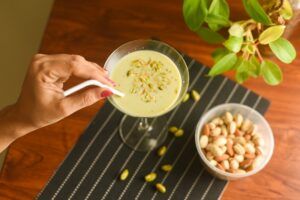











India’s thick Kashmiri saffron strands are about 0.6 inches long and have a purple-maroon color. Some of the designs may be on them. They have a lot of smelly compounds, but they also have a lot of ash.
India is known for having dishes with a lot of spices, so it does not come as a surprise that it is also one of the top producers of saffron, which is a very valuable spice.
Even though it is called Jammu and Kashmir, it is not grown there. This kind of Indian saffron is also grown in the states of Karnataka and Himachal Pradesh, which are both great places to grow it.
Krokos, which is Greek saffron, has red-orange threads that are about 1.2 inches long on average. This is because the style usually keeps some parts.
Unlike Indian and Persian saffron, Greek saffron does not have its own system for categorizing it. Because of this, the products you get from a country can be very different.
In a study done in 2000, it was found that Greek saffron has about half as many essential oils as Indian and some Spanish saffron. Also, Persian saffron had three times as many of these smelly chemicals.
Most of the time, each Krokos thread keeps some of the styles. As a result, Greek saffron thread usually has about 80% stigma and 20% style.
Red Moroccan saffron strands are about an inch long and have a bit of the red-orange and yellow style on them. Those grown at higher altitudes are usually Grade 1 or 2 and are of high quality.
The Greek type of saffron is the same as the Moroccan types in that there are no specific subtypes. Most people call all saffron grown in Morocco, “Moroccan.”
is brilliant red and 0.9 inches long. Its 5-level categorization system is seldom graded by worldwide standards. Sources affect its quality and class.
Most people picture short, slightly curled, brighter-colored Spanish saffron. Spanish saffron is predominantly red-orange with a lot of yellows.
The finest Spanish saffron features stigma-only strands. The Coupe is like Negin, Super Negin, and Sargol. Styles vary in the four lower classes. La Mancha, Rio, Standard, Sierra. Similar to Pushal and Bunch threads. PDO-designated La Macha is the most renowned of the five grades.
Spanish saffron output is substantially lower than the others. Since they formerly controlled the worldwide trade of this red-gold spice. Spanish saffron’s quality and ash content were equivalent to Kashmiri and Persian saffron in a 2000 study.
Most Italian saffron strands are about 0.5 in long and mostly red. But some still have little bits of the orange and yellow style. The typical Italian saffron thread looks a lot like Spain’s Mancha and Rio, which makes sense since it was probably brought to Italy by the Spanish during the Inquisition.
Italian saffron is mostly red, but it can be darker and sometimes have a yellow-orange tint. You might also be able to find some Italian saffron that looks like Negin from Iran.
Saffron is widely used in Turkey, with the most popular product being a saffron-infused Turkish tea. This tea is traditionally served after meals and is known for its health benefits. Other popular saffron products in Turkey include saffron-flavored rice, saffron-infused syrups, and saffron-flavored desserts.
Saffron is a popular spice in Afghanistan, and it is widely used in cooking, baking, and desserts. It is also used in traditional medicine. The most popular saffron products available in Afghanistan include saffron strands, saffron powder, saffron extract, saffron tea, and saffron-infused honey.



